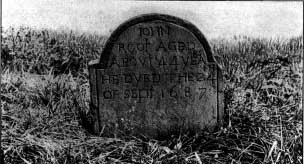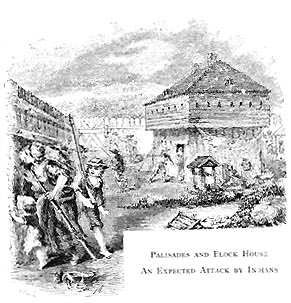Chronology of Westfield
Louis M. Dewey
Copyrighted, 1905, '10, '19, L.M.D.
Copyrighted, 1905, '10, '19, L.M.D.
| 1669. | The General Court of Massachusetts authorized a town at Woronoke, alias Streamfield, to be known as "The Town of Westfield," May 19. Up to this time only about two-thirds of the land between Pine Hill and the rivers had been purchased from the Indians, until on June 3, 1669, several hundred acres of land west of Elm street were purchased for forty pounds from "Alquat the Indian Sachem of Woronoke and Pojassick." |
Westfield's Charter
|
|
|
"Att a General Court of Election, held at Boston, 19th of May, 1669.
"There beging a motion made to this Court in behalfe of the inhabitants at Woronoke, belonging to Springfield, that they may be a township of themselves, Springfield being willing thereto, as appears pr coppy of an order of that towne, under their record's hand, wth remajnes on file, this Court judeth it meete to grant them to be a township, and allows them, according as other townes all priviledges, and that the sajd towne be called Westfield." The House Deputies endorsed this act 25 May 1669 old style. Samuel Taylor, the smith, and Josiah Dewey, a carpenter, were granted homelots on South street in September. John Root was first town clerk and James Cornishh was first justice allowed in September, 1669.  John Root Tombstone
| |
| 1670. |
James Cornish and Joseph Whiting were elected selectmen. (Some of the early records for 1669-70 are missing.) A burying place was probably provided for at this time. (Now east of Mechanic street.)
In December, Jedediah Dewey was granted a homelot between Conner's Bookstore and Parks block, extending west of Ham,pden street. The town was laid out in September, five miles wide at north end, nine miles long southwest, and four miles wide at south end. In this tract the country road covered about three square miles and two more square miles were covered by the farms of Atherton and Clapp at Pochassic, on both sides of the river. George Coulton was the deputy from Springfield for this term. |
| 1671. |
A highway was laid out at the upper end of Hundred acres.
Rev. Moses Fisk had succeeded Rev. John Holyoke and preached here three years up to November, 1671, when Thomas Dewey went to "the Bay," obtained Rev. Edward Taylor, and returned on horseback on the first of December. |
| 1672. |
March 26. First Court consisted of Capt. Aaron Cook, Mr. Joseph Whiting, and George Phelps, who were "to end small causes." At this time Hugh Dudley and wife, Elizabeth Cooke and Mary Fowler, of Westfield, were before the court for being extravagant and wearing silk in a flaunting manner.
This year saw the completion of the first successful mill on Two-mile brook, in Little River district, by Joseph Whiting and Thomas, Josiah, and Jedediah Dewey. They were to have the twelfth part of the corn they ground. Joseph Whiting, Deacon Thomas Hanchet, John Root, John Sackett, and Aaron Cook, were the building committee. It was located on Main street near present Little River bridge in March, 1672. A bridge was also placed over Two-mile brook, now Great Brook, Little River district. Fences were made up by March, 1676; the minister's salary was £60. Josiah Dewey built the minister's house and was paid in land, February, 1676. The population at this time was about 150. |
| 1673. | Highway to Springfield laid out. |

Palisades and Block House An Expected Attack by Indians | |
| Previous Page | Next Page |